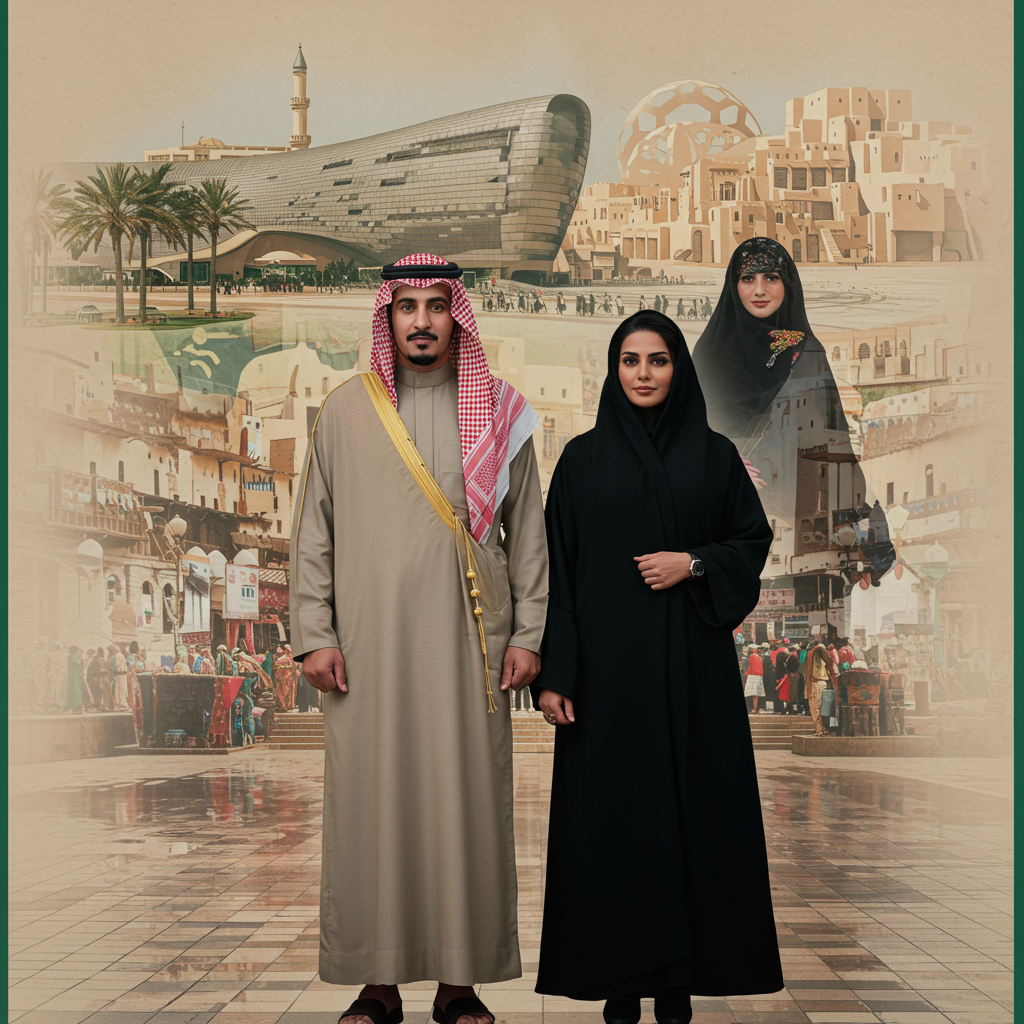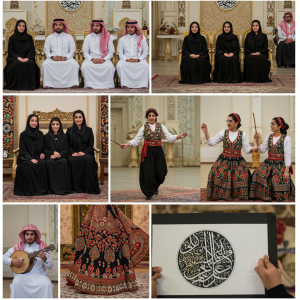Collage of scenes like a traditional Saudi family gathering, female students in modern dress, Al-Ardha dance, folk music performance, and Arabic calligraphy art – in a clear, documentary style for a cultural article.
Culture and Customs of Saudi Arabia: Heritage of Tradition, Waves of Transformation
Saudi Arabia's culture is deeply rooted in the ancient heritage of the Arabian Peninsula, shaped first by Bedouin tribal life and later profoundly transformed by the advent of Islam. As the birthplace of Islam, the Kingdom became a spiritual center, developing a culture steeped in ritual and tradition. However, since the early 21st century, Saudi Arabia has embarked on a wave of social and cultural reforms, seeking to blend heritage with modernity.
Social Structure and Family Role
The family remains the cornerstone of Saudi society. It is often extended and multi-generational, with a strong emphasis on respecting elders, loyalty, and collective decision-making. Tribal affiliations, particularly in rural areas, continue to influence social interactions and identity.
Religion and Cultural Norms
Islam is the foundation of daily life and public conduct in the Kingdom. The five daily prayers shape daily routines, Ramadan is observed nationwide as a time of spiritual focus and social unity, and Islamic principles influence clothing, gender roles, and holidays. Recently, however, reforms have promoted a more moderate public religious culture, particularly under Vision 2030.
Dress Code and Public Appearance
Traditional attire includes the white thobe and shemagh or ghutra for men, and the black abaya and head covering for women. While these garments remain widely worn, younger generations have introduced more color and creativity into traditional styles, particularly in urban centers like Riyadh and Jeddah.
Arts, Music, and Literature
For decades, performing arts and music faced restrictions in Saudi Arabia. Now, under the cultural revitalization drive, concerts, cinemas, and art festivals have emerged across the country. Traditional sword dances like Al-Ardha are still performed at national events, while contemporary music genres appeal to younger audiences. Poetry, especially oral tribal verse, continues to be a cherished cultural form.
Cultural Shifts and Generational Change
In recent years, Saudi society has experienced significant cultural change. Women’s increasing participation in education and employment, the influence of social media, and the rise of public entertainment have reshaped societal dynamics. These changes are managed carefully within religious and cultural parameters to maintain a sense of continuity with the past.
Conclusion
Saudi Arabia’s culture is a dynamic blend of enduring traditions and cautious modernization. As the Kingdom transitions from a conservative society to a more open and globally connected one, it seeks to protect its identity while embracing change. Understanding this cultural landscape is essential not only for comprehending Saudi Arabia but for engaging with the broader Islamic world






No comment